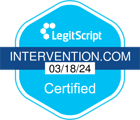For many, food is more than fuel, it becomes a source of comfort, distraction, or control. But when eating shifts into compulsion, individuals may find themselves asking: How can I stop an eating addiction? This struggle, often invisible to others, can feel overwhelming and isolating.
At Change Institute, founded by renowned interventionist Brad Lamm, we believe that eating addiction is not simply a matter of willpower. It is a behavioral health condition that requires compassion, strategy, and support. This guide explores how to recognize eating addiction, practical steps toward recovery, and the specialized treatment approaches, including addressing serious conditions such as Diabulimia, that make long-term healing possible.
What Is an Eating Addiction?
Eating addiction, sometimes referred to as disordered eating or food addiction, describes a compulsive relationship with food. Unlike occasional overeating, it is marked by persistent cravings, loss of control, and repeated failed attempts to stop.
Scientific research has shown that foods high in sugar, fat, and salt can stimulate the brain’s reward pathways in the same way addictive substances do. Over time, this leads to tolerance, dependence, and emotional reliance on food.
Common characteristics of eating addiction include:
- Eating large amounts when not physically hungry
- Eating in secret or hiding food
- Feeling guilt, shame, or hopelessness about eating habits
- Using food as a coping mechanism for stress, anxiety, or trauma
At Change Institute, we view these patterns through both a clinical and compassionate lens. As Brad Lamm emphasizes, “It’s not about broken people—it’s about broken patterns that can be healed.”
Signs and Symptoms
Recognizing eating addiction is the first step toward recovery. While the condition may look different for each person, some common signs include:
- Behavioral patterns: Binge eating, emotional eating, or grazing throughout the day without awareness.
- Emotional signs: Anxiety, depression, or guilt connected to food choices and patterns.
- Physical consequences: Weight fluctuations, fatigue, digestive issues, or metabolic problems.
- Social impact: Withdrawing from friends or avoiding social gatherings where food is present.
Understanding these signs allows families and loved ones to intervene early and with empathy.
Why Does Eating Addiction Develop?
There is no single cause of eating addiction. Instead, it arises from a combination of biological, psychological, and environmental influences.
- Biological: Genetic predispositions and brain chemistry can make certain individuals more vulnerable to food dependency.
- Psychological: Unresolved trauma, depression, or anxiety often fuel compulsive eating behaviors.
- Environmental: Easy access to processed foods, cultural norms around eating, and advertising play a powerful role.
- Family influence: Early modeling of food behaviors, secrecy, or using food as a reward can set patterns that carry into adulthood.
At Change Institute, treatment begins by identifying not just the symptoms, but the deeper roots of why eating addiction develops.
How to Stop an Eating Addiction?
Stopping an eating addiction begins with acknowledging that the cycle is not a personal weakness; it is a complex behavioral health challenge that requires structure and support.
- Build awareness. Journaling food intake, moods, and triggers can help connect the dots between emotion and eating.
2. Practice mindful eating. Slow down, eliminate distractions, and tune in to hunger and fullness cues.
3. Create structured meals. Establish regular eating times with balanced nutrition to avoid the cycle of restriction and bingeing.
4. Develop new coping strategies. Replace emotional eating with healthier outlets such as walking, journaling, or connecting with supportive people.
5. Seek professional help. Individual therapy, nutritional counseling, or outpatient programs provide accountability and healing strategies.
At Change Institute, Brad Lamm and his team use a family-first invitational intervention model that helps our clients feel supported rather than shamed, creating a more effective path toward recovery.
How to Overcome Eating Addiction?
Overcoming eating addiction is a long-term process that blends medical, psychological, and social support. While stopping an addictive pattern is the first step, overcoming it requires sustainable change.
Therapeutic approaches:
- Cognitive Behavioral Therapy (CBT): Identifies and reshapes destructive thought patterns about food.
- Dialectical Behavior Therapy (DBT): Strengthens emotional regulation and distress tolerance.
- Acceptance & Commitment Therapy (ACT): Encourages living in alignment with personal values instead of compulsions.
Community and accountability:
- Group therapy or peer support provides shared understanding and reduces isolation.
- Family involvement ensures long-term changes are supported at home.
Lifestyle adjustments:
- Consistent exercise, adequate sleep, and stress management all reinforce recovery.
- Nutrition counseling helps individuals learn how to fuel their body without fear or guilt.
Brad Lamm often emphasizes that recovery is not about perfection but progress: “We don’t expect a straight line; we expect commitment to keep moving forward, even when we stumble on setbacks.”
What Is the Treatment for Diabulimia?
Diabulimia is a dangerous and life-threatening condition where individuals with type 1 diabetes deliberately restrict insulin use to control weight. This can result in severe complications, including diabetic ketoacidosis, organ damage, or death.
Treatment requires an integrated and multidisciplinary approach:
- Medical stabilization: Endocrinologists work to safely restore insulin use and monitor blood sugar.
- Nutritional therapy: Specialized dietitians help rebuild a balanced relationship with food and insulin.
- Psychological support: CBT, DBT, and trauma-informed therapy address the emotional drivers of insulin restriction.
- Family education: Loved ones learn how to support recovery without enabling dangerous patterns.
- Ongoing care: Outpatient programs or structured support ensure long-term adherence and relapse prevention.
At Change Institute, Brad Lamm’s intervention model has been adapted to help families lovingly confront Diabulimia. By combining medical oversight with behavioral health expertise, recovery becomes not just possible—but sustainable.
The Role of Families in Recovery
Families play a powerful role in both the development and the recovery of eating addiction. Too often, loved ones enable destructive patterns without realizing it. At Change Institute, families are invited to participate in the healing process by participating in our six-month Family ClassTM.
Through guided interventions and education sessions, families learn:
- How to set healthy boundaries
- How to stop enabling behaviors
- How to communicate supportively rather than with judgment
Contact us Today!
Eating addiction can feel overwhelming, but it is treatable. With compassionate care, evidence-based therapies, and the family-first approach pioneered by Brad Lamm, lasting recovery is possible.
For those facing the compounded challenges of Diabulimia, specialized treatment is essential. Change Institute’s integrated approach provides hope and healing for individuals and families alike.
If you or someone you love is struggling, remember: you are not alone, and help is available. Recovery is not only possible, it begins with the first step. Contact us today to learn more!

